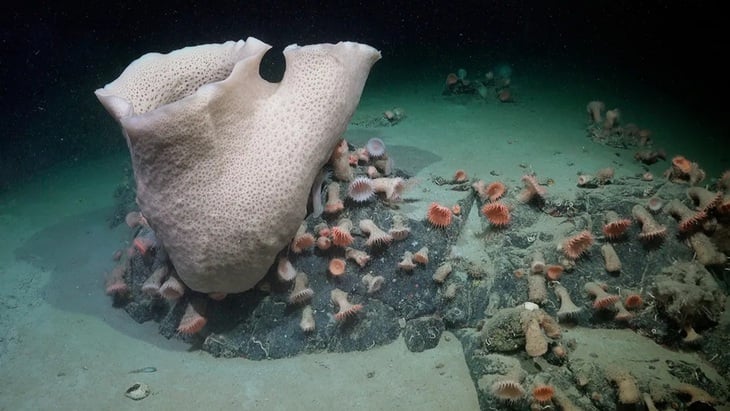
A large sponge, a cluster of sea anemones and other creatures are seen at a depth of 230m in a newly exposed area of the George VI Ice Shelf in Antarctica - Photo: ROV SUBASTIAN/SCHMIDT OCEAN INSTITUTE
A "diverse and beautiful" ecosystem has been revealed on the seabed after an iceberg the size of the city of Chicago broke away from Antarctica , exposing a host of strange but beautiful life forms including ice fish, giant sea spiders and octopuses.
The iceberg, known as A-84, broke away from Antarctica 's George VI Ice Shelf in January 2025, revealing a part of the seabed that humans had never seen before, according to IFLScience on March 25.
When the iceberg calving event occurred, scientists on the R/V Falkor of the Schmidt Ocean Institute (based in the US) in the Bellingshausen Sea changed their plans when they knew they would have the opportunity to explore an interesting situation.
"We seized the opportunity, changed our plans and prepared ourselves to be able to explore what was down there," said Dr Patricia Esquete, who works at the University of Aveiro (Portugal) and is part of the research team.
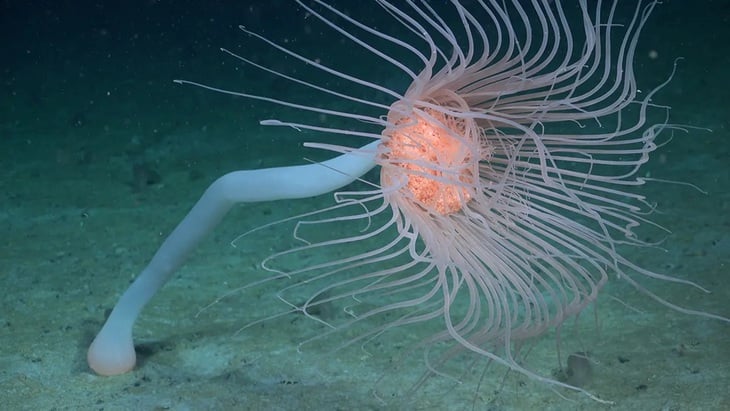
A lone hydra drifts along a current at a depth of about 380m in a newly exposed area of the George VI Ice Shelf in Antarctica - Photo: ROV SUBASTIAN/SCHMIDT OCEAN INSTITUTE
The team used the ROV SuBastian to explore the newly exposed seafloor for eight days at depths of up to 1,300m. They observed large coral reefs and sponges teeming with life. The team was also overwhelmed by the richness and diversity of life thriving in this habitat.
In most deep-sea environments, organisms rely on small amounts of organic matter that settles from the surface where sunlight reaches. But Antarctic ecosystems have been “sealed” beneath some 150m of ice for centuries, cutting them off from this vital source of nutrients and making their survival extraordinary.
"We did not expect to find such a beautiful and thriving ecosystem. Based on the size of the organisms, the community we observed had existed there for decades, possibly hundreds of years," said Dr. Esquete.
The team speculates that the creatures survived thanks to ocean currents that carried nutrients beneath the thick ice. The team hopes that further research will help find the exact source of the nutrients that helped them survive.
Dr Jyotika Virmani, executive director of the Schmidt Ocean Institute, said the calving of iceberg A-84 from Antarctica was a rare scientific opportunity. “Spontaneous moments are the thrill of research at sea. They provide the opportunity to be the first to witness the raw beauty of our world,” said Virmani.
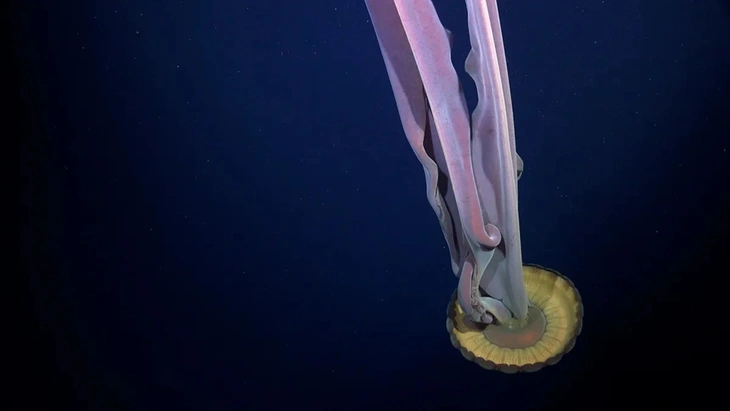
A giant ghost jellyfish is seen in the Bellingshausen Sea off Antarctica - Photo: ROV SUBASTIAN/SCHMIDT OCEAN INSTITUTE
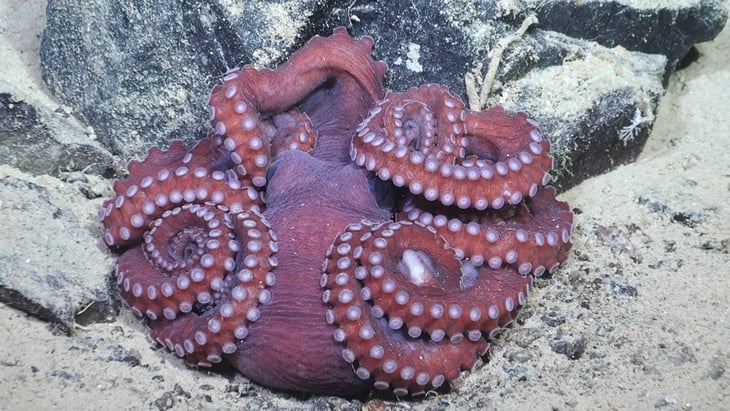
An octopus at a depth of 1,150m in the Bellingshausen Sea off Antarctica - Photo: ROV SUBASTIAN/SCHMIDT OCEAN INSTITUTE
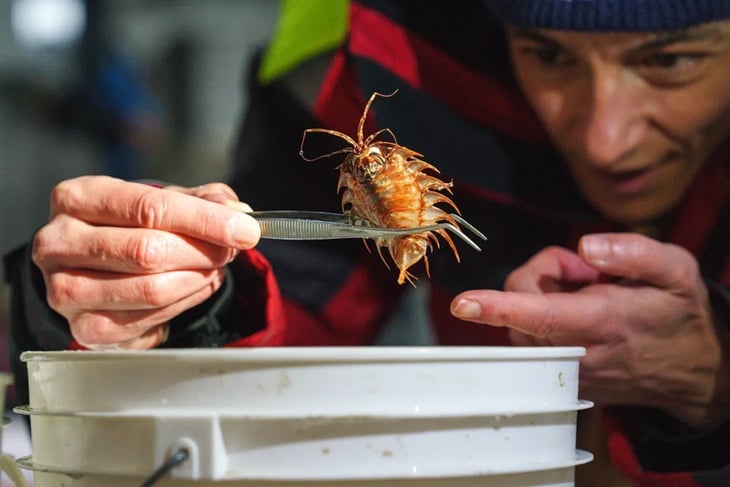
Scientist Patricia Esquete examines a sea bug sampled on the Bellingshausen seabed off Antarctica - Photo: ROV SUBASTIAN/SCHMIDT OCEAN INSTITUTE
Source: https://tuoitre.vn/tang-bang-troi-tach-khoi-nam-cuc-he-lo-he-sinh-thai-bien-sau-da-dang-20250325110418684.htm


![[Photo] Prime Minister Pham Minh Chinh chairs conference on anti-smuggling, trade fraud, and counterfeit goods](https://vphoto.vietnam.vn/thumb/1200x675/vietnam/resource/IMAGE/2025/5/14/6cd67667e99e4248b7d4f587fd21e37c)













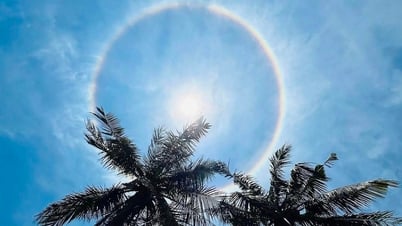











































































Comment (0)